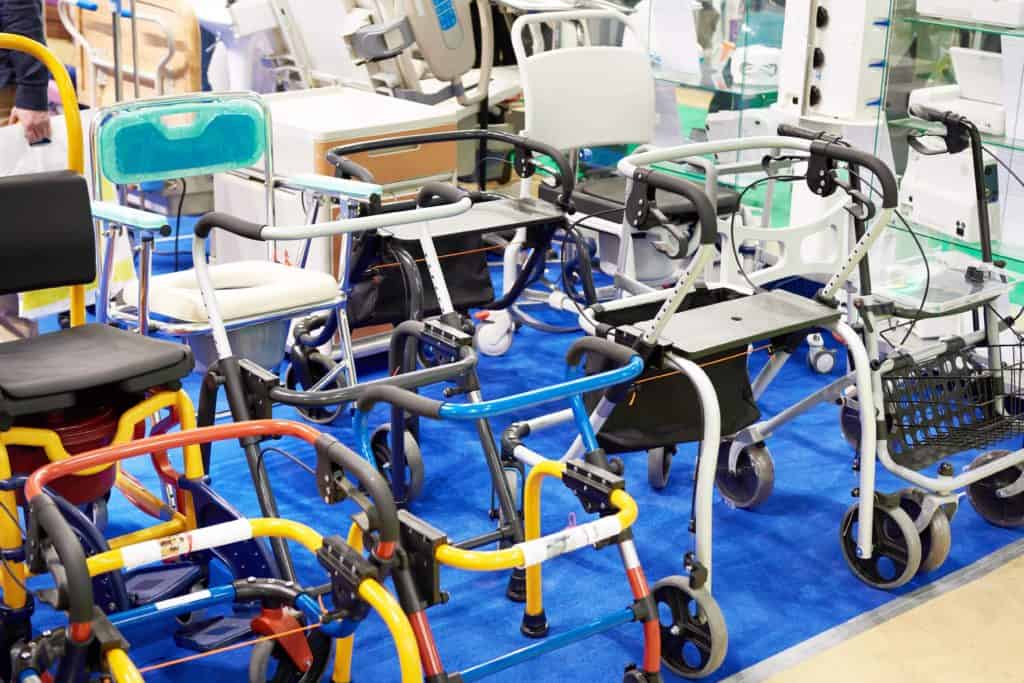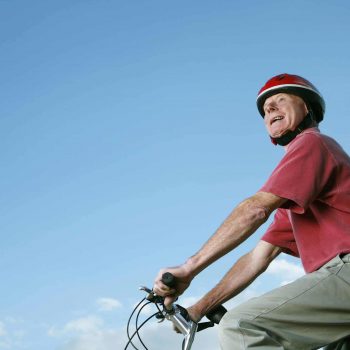

Mobility & Disability
Can Strength Training Reduce Physical Disability In Older Adults?
SonderCare Learning Center

SonderCare Learning Center
Can Strength Training Reduce Physical Disability In Older Adults?
There are many benefits of exercise for seniors. Regular physical routines of all kinds help improve physical and mental functions, reverse some effects of chronic disease, maintain healthy blood pressure and body weight, and keep older people mobile. It also increases the range of motion and functional independence of older adults! One kind of exercise that’s important for mobility is called strength training. How can older adults use strength training routines to reduce physical disabilities?
Strength training, also called resistance training, is a series of physical exercises designed to improve strength and endurance. It’s a program that can help seniors increase their muscle and core strength, slow mineral loss in leg bones, hips, and lower spine, and stave off cardiovascular diseases.
Resistance-based strengthening requires muscles to work against a load, which may be an external load or bodyweight; this resistance is progressively increased over time. Most research around strength training in older adults has high-intensity strength training protocols, most frequently involving 8 to 12 repetitions of the exercise to the point of muscle fatigue. These programs often involve the support of physical therapists and usually use specialist equipment like resistance bands.
Strength training doesn’t have to be complex, though. Simple exercises that can be done several times per week, such as standing on one leg or movement-based activities like tai chi and yoga, can improve one’s stability and balance. In addition to strength training, other routines can help improve coordination, such as swimming and using full or half-dome exercise balls.
Strength training and resistance exercise are effective at counteracting the natural muscle loss that comes with aging. It can also increase bone density, keep joints supple, maintain a healthy heart rate, and provide a feeling of independence. Much like a “runner’s high,” strength training can help seniors feel better about their bodies!
On top of the benefits of improving muscle strength, heart health, and bone density, resistance training can be a necessary factor in preventing falls. Physical activities can improve stability and balance, helping the muscles work together in ways that keep older adults more stable and less likely to fall. These are especially necessary for people with bone density issues like osteoporosis.
When a senior can maintain their balance and ability to move, the results can reduce the likelihood of developing physical disabilities because of degenerative diseases. It can be an excellent way for seniors to keep up with daily activities and prevent adverse outcomes that result from aging.
It’s easy to focus on the negative statistics and gloss over the 80% of falls that don’t result in serious injuries. Older adults should certainly take preventative precautions, but not be so fearful that it affects their social health.
When the fear of injury causes older adults to isolate themselves, they are more likely to experience depression.
The fear is understandable. Fractures in this age group are often slow to heal and may also result in a long-term mobility loss.
In some cases, the fear is precipitated by tripping. Even if the person doesn’t sustain serious injuries, they’re likely to be wary in the future. Patients may feel unsafe being on their own and decide to admit themselves to a care facility.
Older adults with excessive anxiety about injury should seek support. They may approach their families or health care practitioners for safety tips.
Older people with poor balance can do many things to prevent tripping as well as to alleviate their anxiety over it.
They may install support bars and other aids in their homes. A support bar can help them steady themselves in the shower or when climbing stairs. Securing loose carpets and using specially-designed mats on tiles will provide more security.
Furniture in the home may also make a significant difference. SonderCare is a company that creates bedroom furnishings specially made for senior citizens. Their products include:
Another recommendation is to consider clearing cluttered spaces to ensure the ability to walk without tripping. A medical panic button or app to call assistance might provide assurance that help is at hand.
Older adults who take chronic medication should speak to their doctors about changing the prescription. They should tell their doctors if their medicine causes dizziness, a loss of balance, or if it seems to be affecting their cognitive abilities.
Low lighting in the home may present a hazard. Older adults should consider installing brighter bulbs or adding additional lamps to offset this risk.
Start Exploring Mobility & Disability With SonderCare
Are you recently discharged from hospital, experiencing mobility issues, or in need of palliative or senior care? Enjoy a smoother recovery and get the luxury you deserve by choosing our home hospital products. Contact us today to discuss home hospital beds, mattresses, stand assist chairs and other accessories to make your home hospice perfect for a truly comfortable experience.
Are you looking for the most recent articles on physical disability resources? Browse our latest resources below and let us know if you have any questions. We’re here to support you as you embark on your road to home medical care.
Seeking The Best Care For Your Loved One?
Browse North America's Luxury
Mobility & Disability
Product Inventory